Part 1-EASTERN EUROPE: STRUDEL, SCHNITZEL AND STRAUSS, A FEW OF OUR FAVORITE THINGS
Strudel, Schnitzel and Strauss weren’t all that grabbed our attention about Eastern Europe, but they were certainly components of the rich cultural influences food, wine, music, arts, and architecture played during our recent Odysseys Unlimited Discovering Eastern Europe tour. The trip evoked memories of our ancestry.
Yiddish was the language my grandparents, aunts and uncles spoke when they didn’t want me to understand the conversation. English was the rule otherwise. How often did I hear them say, “We are now Americans. We speak English.”
My parents were first-born Americans from parents who fled Poland, Romania and the Austro-Hungarian Empire in the early 1900s. Even as the eldest of my parent’s three children, I didn’t know to ask why they fled their native countries or how
their strong work ethic and diligent responsibility would become the catalyst for their monetary success, or how the 1929 Great Depression would once again leave them financially impoverished but spiritually determined to thrive. What I did understand was that my relatives’ apartments in Coney Island and the Bronx (NY) would be filled with loud voices, lots of love, and the comforting smell of chicken matzo ball soup, stuffed cabbage, baked rice pudding, or ruglah, a horseshoe-shaped cookie filled with diced nuts, chocolate pieces, and dried fruits. (Very different from ones served at TooJays Restaurants.)
My husband Russ’ family left Germany and settled in Iowa. His mother wasn’t a great cook, but he clearly remembers feasting on bratwursts, sausages, dark, dense pumpernickel breads, and later, hearty German beers.
I can’t point to food as the catalyst that finally got my husband to agree that our fifth tour with Odysseys Unlimited would be Discovering Eastern Europe. Seeing the locales my grandparents were born: Warsaw, Poland; Bucharest, Romania; Vienna, Austria and Budapest, Hungary has long been on my must-do list. All but Bucharest is part of the tour’s schedule.
Perhaps the catalyst is that neither of us has ever visited these countries except for a brief foray into Germany when we had sought out Russ’ grandparents’ birthplace. The allure might have been that this would be the first trip we’ve taken that includes Jewish history and offers glimpses of current day Jewish life, but it just as easily could be that this tour delves into the people and politics that shaped Eastern Europe’s arts and architecture. We would see magnificent ornate structures, bullet-riddled preserved iconic buildings, and cities that were rebuilt from the ashes of World War II (WWII) bombings.
It might be all those aspects, but it was the first bite of pierogis (think Chinese wontons but larger and filled usually with cabbage, cheese and potatoes instead of shrimp and pork) and stuffed cabbage oh-so-similar to the way my Aunt Fanny made it, that brought me to the moment of truth: food and what it represents was an underlying cause. Food was the celebrated ingredient that united our families. They were the keys to our childhood, the memories of the relatives we loved and lost, an emotional connection to a past that only certain dishes could evoke.
Russ and I ate our way through the tour’s stops in Poland, Hungary, Austria, Slovakia, Czech Republic and Germany. The foods we grew up with fueled our exploration of countries rich in texture, colors, architecture, and history. In truth, the Discovering Eastern Europe tour was our comfort food for the soul.

Stuffed cabbage, a side of spinach and a great bottle of wine at Miód Malina Restauracja in Kraków, Poland.
What we learned:
WWII leveled Eastern European cities and left behind bullet-hole ridden buildings, a ravaged economy, and destroyed whole families, particularly Jews. Then came the Communists, pledging everyone would be treated equally and have all that would be needed for a healthy, happy life. Fifty years under Communist rule further repressed the quality of life and stagnated the countries from economic renewal or progression.
How fortunate for our 24-member tour group’s education and appreciation that we were under the upbeat, knowledgeable, and motherly guidance of Tour Director, Silvija Marta Horsta, a Latvian who grew up under Communist oppression. Her personal recollections were as valuable as her descriptions of the reconstruction or renovation of architectural gems in Baroque, Gothic, Art Nouveau and Art Deco designs. Silvija optimistically relayed how 20 years after the demise of Communist rule, the Eastern Bloc countries’ economies are finally rebounding thanks to being accepted into the European Union or becoming the number one producers of auto parts for companies like BMW, Volkswagen, Jaguar, Porsche, Skoda and Kia. Silvija transformed what we saw into 3-D. The history of Eastern Europe would no more be just something forgotten from a textbook read many years ago.
Each day in a new country, we practiced basic phrases. Even with the cheat-sheet she gave us, we struggled figuring out charges with four different currencies. We learned that a Polish Zloty was worth the equivalent of roughly 3.6 to a dollar only to cross into Hungary and have to comprehend the Forinth, made even more difficult because the money was charged as Huffs. There are roughly 271 Huffs to a dollar. On this trip, three countries used the Euro and three (Poland, Hungary and the Czech Republic) sentimentally retain their own currency. Lesson learned: when in doubt, use your credit card.
My most difficult task in writing notes on this trip (besides not tripping on steps or uneven cobblestones while walking) was not about what to include, but what to omit. WWII had caused devastation on all fronts across Europe. Some of it is still visible. Though retelling some of that story is relevant to what we saw and heard on this tour, my focus will be how countries learned from their past to generate a more prosperous future.
POLAND
THE RAZING AND REBUILDING OF WARSAW
Where we stayed:
Polonia Palace Hotel may have opened 90 years ago, but their 206 guestrooms could pass for any typical American hotel in décor and size. One of the reasons we love to travel with Odyssey’s Unlimited is that our hotels are among the best the city has to offer and when possible, air conditioning is available. That is not typical for European countries who never faced the blistering heat that has blanketed them in recent years. On this trip, each of the hotels had AC, but its effectiveness varied. What we enjoyed most about Polonia Palace Hotel, besides its convenient location across from the Palace of Culture and Science, were the surprises that awaited us at breakfast. This was the first time Russ and I have ever been on a tour where the breakfast buffet includes vodka and bubbly wine. (We encountered this later in other hotels as well.) There were at least a dozen interesting cheeses and fresh baked breads of various tastes and textures. The coffee machine had stronger coffee than the pots placed on individual tables. The breakfast buffet also contained salads, a wide variety of fresh fruit, and delightful baked apples with cranberry filling.
What we learned:
hello/good morning = dzień dobry
goodbye= Do widzenia
thank you = Dziekuje
About 85% of Warsaw, where my maternal grandpa was born, was destroyed in WWII. Today it is a UNESCO-designated because the city reused bricks from destroyed buildings to rebuild. When the Soviets began erecting housing for workers, the design of those drab square buildings is called socialist realism. Most of those apartment buildings are still in use across the Eastern Europe bloc because they are more affordable than newer housing.
Warsaw is the largest city in Poland, with about two million people. Krakow is the second largest with 800,000, though a local guide joked the second largest is actually Chicago, IL… home to more than one million Poles.
English is taught in school as a second language. Public university is free for those admitted.
Tips on restaurant bills should be paid in cash unless the server indicates they will receive the money from a credit card payment. We asked at each restaurant, always being sure to have plenty of local currency available for tipping.
Two well-known movies were filmed in part in Poland: “The Pianist” and “Zookeeper’s Wife.”
Poland is divided into 16 administrative subdivisions.
Bottled water in Warsaw can cost more than a glass of wine. That turned out to be true across much of Eastern Europe.
Poland’s population is mostly homogenous and has the largest population of countries on this tour.
Although the largest agricultural export Poland produces is apples, the country creates car parts for companies such as Volkswagen, Kia, and Toyota.
The average minimum wage in Warsaw is about 500 Euros a month (2,100 Polish zlotys or about $850), but a pensioner who survived WWII, may only get $400-500 a month. About 30% of a person’s salary goes for taxes. Interestingly, the salary quoted for a job is actually net pay. Employers remove taxes dollars before paying the wage. Once a person has worked for a year, it is possible to receive eight months’ unemployment due to job loss. What you are quoted in a restaurant or store is what you pay. No taxes or fees are added.
Wood is the main heating material although large cities bring in natural gas from Russia.
What we saw:
We visited Łazienki Królewskie Park, a serene setting of green manicured lawns. Twenty-five percent of Warsaw is filled with parks. Upon first entering this park, a forbidding stern military statue appears to stand guard. He is Józef Klemens Piłsudski, the first Marshall of Poland and considered the Father of modern Poland. Could he be guarding the statue of Warsaw native son, Frédéric François Chopin, recognized child prodigy at four and concert pianist at eight? The large statue of Chopin sitting under a weeping willow (representing his homeland) on the edge of the park’s pond is a replica of one the Nazis destroyed. Push the button on a nearby park bench and strains of a Chopin military march emanate. Throughout the city, 14 benches play additional snatches of his music. As a testament to Chopin’s popularity and import, Warsaw has hosted the International Music Festival honoring Chopin, each September since 1927.
Eastern Europe bred many famous pianists and composers. Chopin. Mozart. Vivaldi. No matter which city we were in, day or evening, in a restaurant dinner show or in a gilded church, concerts honoring these acclaimed musicians and composers could be heard. As a wonderful side trip, we were treated to a superb Chopin piano concert at a local music academy.
Before WWII, there were 350,000 Jews living in Warsaw; three-and-half million in Poland. Today there are about 1,000 in Warsaw who practice or identify as Jewish. We visited The Orthodox Jewish Cemetery, one of the largest preserved Jewish cemeteries in Europe, built in 1806. Roughly 250,000 Jews killed during WWII are buried here, though many of the crumbling headstones are symbolic. In 1930, when the ghetto was built, about 450,000 Jews were forced to live there in cramped quarters, with little food, hygiene or heat to quell Poland’s harsh winters. Many perished. Twelve years later, the Nazi’s created the Final Solution, opting to send 300,000 ghetto survivors to Treblinka (concentration camp) in July. By 1943, remaining Jews knew they’d be exterminated and chose to fight. They were massacred.
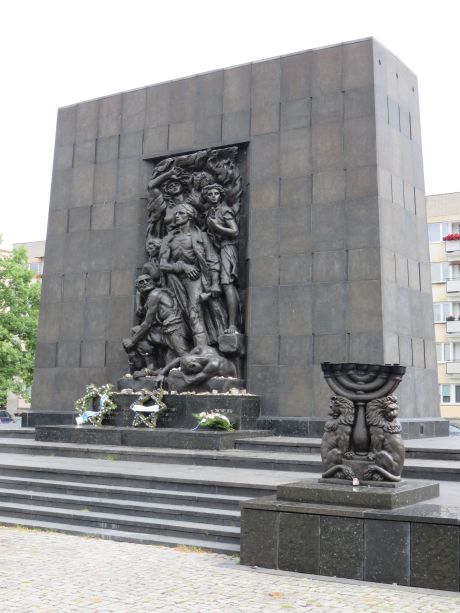
This statue in front of the POLIN Museum of the History of Polish Jews honors the Uprising’s resistance fighters.
On the site of the former Warsaw Ghetto, now sits the POLIN Museum of the History of Polish Jews, representing a 1000-year history of Polish Jew. An emotionally powerful, massive statue honoring the Uprising’s resistance fighters fronts the museum. The irony of the word Polin means “to rest here” and references the first arrivals of Jews to Poland. The heroes did indeed later “rest here.”
Warsaw has largely evolved into a modern city with many significant contemporary buildings and infrastructure. The historical area we visited was totally destroyed in WWII, but rebuilt entirely as originally laid out. Castle Square is the central gathering spot of the Old City. Seated in a prominent position in the middle is a statue of a mermaid, the symbol of the town. One of the famous buildings rebuilt with recycled bricks is the Royal Castle, official residence of the Polish monarchs.
What we ate. What we drank:
Our welcome dinner at the Polonia Palace Hotel was an omen of the food-gasm to come. Russ and I both chose the sautéed pierogis stuffed with cabbage, mushrooms and other veggies. Those who had the creamy cod in lemon sauce with broccoli and roasted potatoes seemed equally as pleased. Chocolate tart with raspberries and plenty of wine completed the meal.
I have been known to enjoy a vodka-based cocktail upon occasion but wasn’t quite onboard with Poland’s signature drink, Żubrówka vodka with apple juice. Żubrówka, known in English as Bison Grass Vodka because a piece of grass rests in the bottom of the bottle like a worm does in some tequilas, is a dry, yellowish, herb-flavored vodka distilled from rye. It’s so potent that it was banned in the United States until 2011.
One of the most intriguing restaurants on this trip was the Radio Café, which was founded as a club by former members of Radio Free Europe, which broadcast from Munich, Germany beginning in 1952. Even the radio audience could have been jailed if discovered listening to the anti-propaganda messages. Posters depicting the era and how anything deemed anti-Communist was forbidden crowd the walls between Polish memorabilia. Though steeped in history, and maybe you’ll get to hear personal glimpses from the owner as we did about his days managing the club back then, we were there to eat, drink and make merry… all of which we did.
I thoroughly enjoyed a bowl of Zurek, a traditional Polish sour rye soup. It is a meaty broth thickened with rye flour, slices of both sausage and hard-boiled eggs, and mushrooms. Russ and I ordered blini, mistakenly thinking when it said potato pancake that it was what we also know as latke. No, they actually mean a pancake made from potato flour and served with sour cream. Russ ordered kiełbasa z rożna z cebulką, grilled kielbasa sausages with fried onions. A bowl of large cooked lima beans and a dish of half-sour pickles cut into chunks were pre-set for snacking. All the food was prepared one dish at a time so they came out in stages.
While walking around Warsaw, Russ and I ate at a fast food chain called Kebab, except it was anything but fast. We later saw these restaurants throughout Eastern Europe. We shared the most enormous gyro we’ve ever seen, and still didn’t eat all of it. Instead of traditional tzatziki sauce it had a tasty, eye-tearing tangy sauce. Our quickie meal was inexpensive, about $9 for the sandwich and a bottle of Coke. Definitely a treat.
Many varieties of rye breads are popular for breakfast. Breakfast for children might be cereal but adults eat bread, porridge, omelets, tomatoes and cucumbers. Sandwiches are not a common lunch meal. Soup and salads are. Locally made cottage cheese is popular. Cheesecake is made from cottage cheese, not cream cheese, which provides a different texture and is less sweet.
Coming in Part 2 – From Concentration Camps to Trendy Kraków
www.poloniapalace.com
www.lazienki-krolewskie.pl
www.polin.pl/en
www.radiocafe.pl
Karen Kuzsel is a writer-editor based in the Orlando area who specializes in the hospitality, entertainment, meetings & events industries. She is an active member of ILEA and MPI and is now serving on the 2017 – 2018 MPI Global Advisory Board for The Meeting Professional Magazine for the third consecutive year. She is a member of the Society of Professional Journalists. Karen writes about food & wine, spas, destinations, venues, meetings & events. A career journalist, she has owned magazines, written for newspapers, trade publications, radio and TV. As her alter-ego, Natasha, The Psychic Lady, she is a featured entertainer for corporate and social events. karenkuzsel@earthlink.net; www.ThePsychicLady.com; @karenkuzsel; @thepsychiclady. Food photos for this series by Karen Kuzsel.
All other Photos by Russ Wagner, a retired government planner/builder who has a passion for trains, travel and taking photographs.

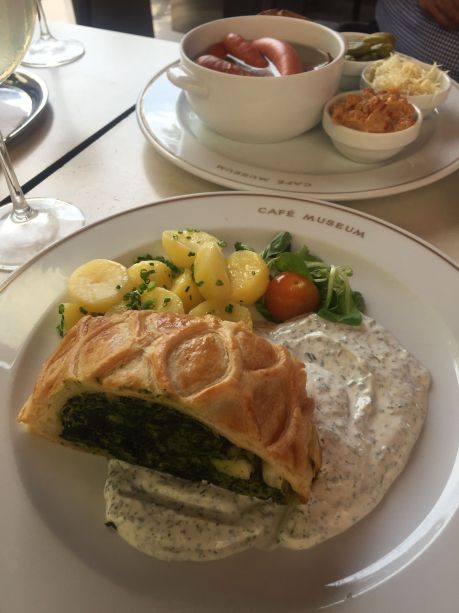
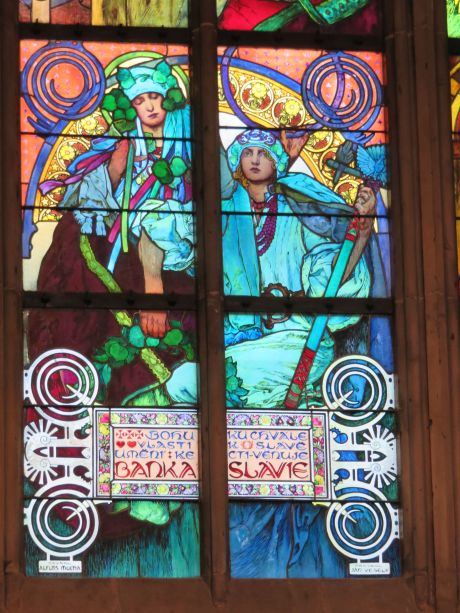

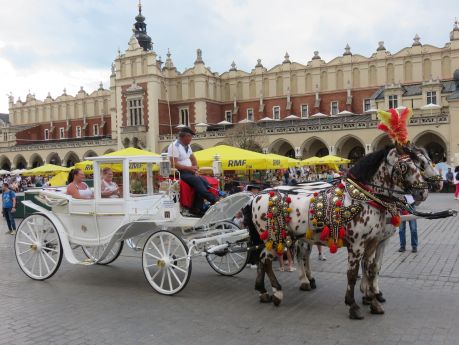
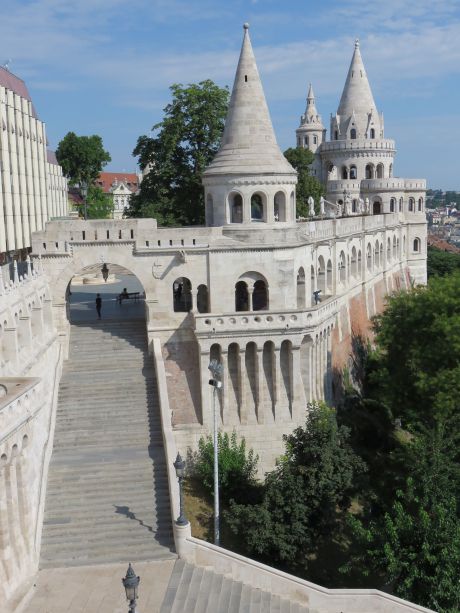



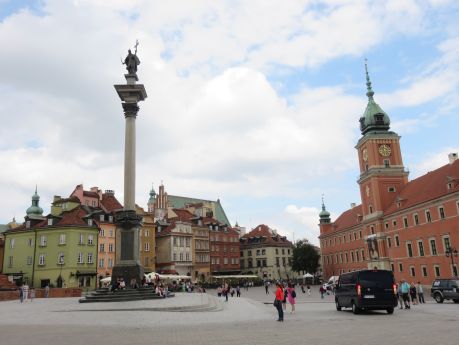

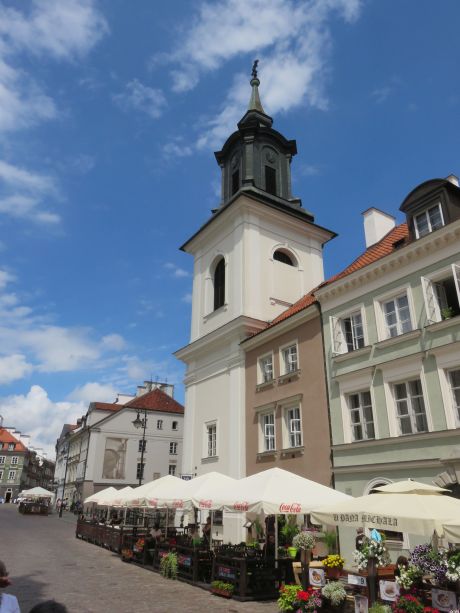

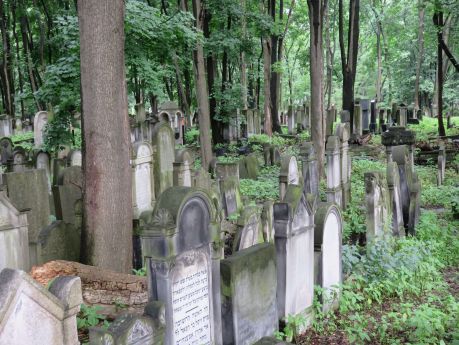

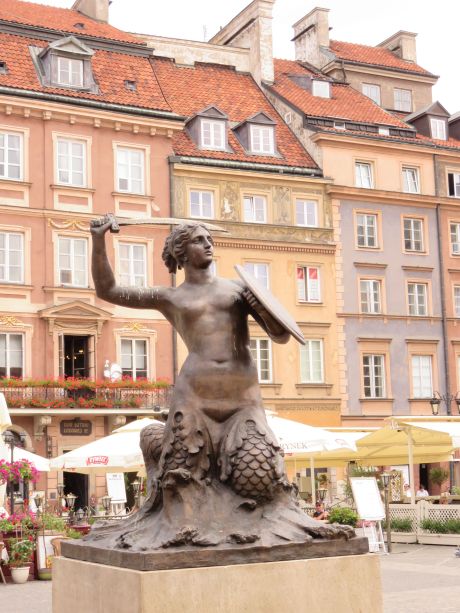
Great read, now I am hungry!
That makes me happy!
Excellent read. It was painful reading about the Holocaust, but redeeming to learn that although 85% of Warsaw was destroyed in World War 2, the bricks from the original structures were reused to rebuild. The photo of the Orthodox Jewish Cemetery is sad yet so vivid and revealing. Did you take that picture?
Thanks for reading and responding. Choosing what I wrote about the Holocaust took a lot of time. I had to keep reminding myself not to be maudlin and instead to remember this is a travel series. No, I didn’t take that photo. Russ did. In the final part, I took the photo we’re going to be using of the Holocaust Memorial in Berlin.